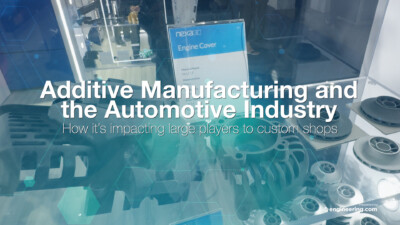Is this the end of the road for Cruise?

After being banned in San Francisco, following an incident in which a self-driving Chevy Bolt ran over and dragged a woman who was in a crosswalk 20 feet on October 2, Cruise, the self-driving division of GM, has suspended its robotaxi programs everywhere. Cruise had initiated robotaxi programs in Phoenix, Houston, Austin, Dallas and Miami, and between them all, had a fleet of 400 autonomous vehicles.
On LinkedIn and X (formerly Twitter), Cruise and its CEO Kyle Vogt, respectively, issued statements about the suspension of all self-driving car operations while claiming that the suspension “is not related to any new on-road incidents,” a clear reference to the October 2 incident.
This self-imposed suspension marks a significant reversal for the Cruise program and may put the entire Cruise division in jeopardy.
The triggering event in San Fransisco is only the latest in a series of negative, much-publicized developments for Cruise. Cruise robotaxis have caused traffic jams and fire department headaches and have been stopped in their tracks by activists placing traffic cones on the vehicles’ hoods. That went viral.

The irony hangs heavy on Cruise CEO Kyle Volt. Cruise robotaxis will only make the streets safer, Vogt has argued. Only 2 weeks before the San Francisco incident, Vogt was interviewed in the back seat of a Cruise robotaxi for Mad Money. He and host Jim Cramer, who was visiting the city from his base in New York, had a totally incident-free ride, cruising the busy streets of San Francisco in Gnochi (all Cruise vehicles have names). They discuss all the reasonable, logical and financial reasons for self-driving cars (like fewer fatalities, fewer teenagers having accidents, lower insurance payments) and emotional ones (more privacy, less drunk driving). In fact, Cramer, a fan of the technology, can’t think of a single reason why Cruise would be anything but welcome in San Francisco, the epicenter of high tech.
Is this a city eating its young? asks Cramer—though not in those exact words. Neither Cramer nor Vogt can understand why Silicon Valley is rebelling against the technology it is associated with, a technology that will only make its streets safer.
Umm … Could it be that San Franciscans see Cruise as an outsider, the premature birth of a dinosaur from Detroit that is using its streets as a laboratory for unfinished code?
In the video, the pair discuss the “few” incidents that have occurred and shrug them off. A reminder: this was filmed before the October 2 incident. will make its streets safer, citing “independent research” that proves without a doubt the enormous safety advantage that autonomous vehicles offer. They shrug off “awkward moments,” like a self-driving car stuck in concrete and the hysteria that ensues after accidents and injuries involving self-driving cars.
“Think of a 737 full of people crashing every day,”[i] says Vogt, offering a stark contrast to the relative safety of Cruise vehicles.
Gloat Much, Google?
Meanwhile, Google highlighted a Verge article in which “Waymo’s robotaxis are going the distance in San Francisco.” With Cruise out of the running, Waymo is enjoying being the only remaining robotaxi operator left driving in the city. Google, now known as Alphabet, was conceived by Stanford grads, has its headquarters in Mountain View, and is the modern poster child of Silicon Valley, which traces its roots to Hewlett-Packard’s garage in Stanford.
The End of the Road?
Mary T. Barra, CEO of GM, has yet to officially comment on Cruise’s October 2 incident or the robotaxi suspension announced by Cruise CEO Kyle Vogt. GM sinks an average of $588 million every quarter in Cruise. A Chevy Bolt (an electric economy car with an MSRP of around $30,000) jumps fivefold in cost (between $150,000 and $200,000) after being equipped for full self-driving. The revenue is produced at $10 per ride—the average fare in San Francisco. And since October 2, with its San Francisco fleet grounded, it has produced zero dollars in revenue.
If the Cruise crisis is the next headache for Barra, who may be recovering from a migraine after a show-stopping United Auto Workers (UAW) strike that reached a tentative settlement only a few days ago. GM has had a spotty record in embracing new technology that dates back to the OPEC oil embargo and carries through to modern times with a halting start-stop-start on electric cars. In 2021, Barra announced plans to make GM go electric with all of its vehicles by 2035 but said it would be ending production of the Bolt by the end of 2023, only to revive the Bolt in July of this year. Last month, Honda killed a $5 billion plan to build Equinox electric vehicles (EVs) with GM.
In summary, GM’s commitment to EVs is inconsistent, and given the pressures from a suspended self-driving program with enormous negative PR and short-term revenue hurdles to overcome, how long can GM be expected to tolerate the Cruise division?
[i] Fact check. The National Highway Traffic Safety Administration says an average of 102 people a day die in car accidents. The Boeing 737-100/200 can carry between 85 to 130 passengers. The 737ER (Extended Range), the latest version of the 737NG (next generation), can carry up to 180 passengers in a two-class configuration and 220 passengers if the entire airplane is configured for economy class.



